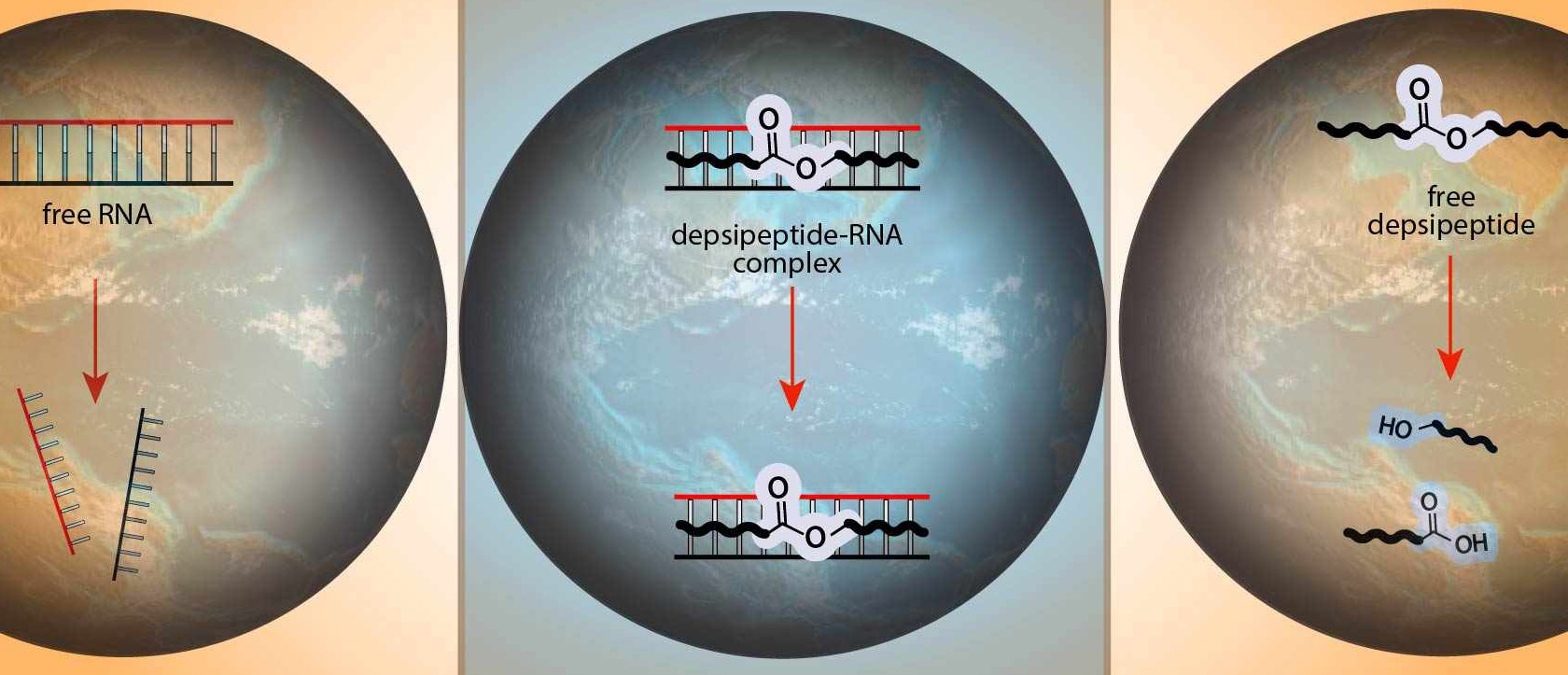
Jun 22, 2020 - Atlanta, GA
This story by postdoctoral researcher Moran Frenkel-Pinter first appeared on Nature Research Chemistry Community.
How did life begin? - is one of the most intriguing questions in all science. How did cooperative, interdependent relationships between nucleic acids and proteins arise? RNA makes protein in the ribosome and protein makes RNA in polymerases. This interdependence of biology leads to apparent paradoxes for the start of life: which came first, nucleic acids or proteins – the chicken or the egg?
Many researchers favor the RNA world hypothesis, in which RNA came first and initially served dual roles as both a genetic polymer and as an enzyme. According to this theory, RNA once self-replicated, but has now lost that function in biological systems. This model is attractive because avoids the extreme improbability of simultaneous independent origins of two different types of polymers. Over time the RNA World incrementally invented the ribosome, giving rise to the current biological system comprised of RNA, DNA, and protein.
In an alternative model, the evolution of nucleic acids and proteins was concerted. Multiple types of polymers were intimately connected from the very beginning (i.e. a Ribonucleoprotein World). In this model, the extreme improbability of simultaneous origins of two different types of polymers is solved by assuming their origins were not independent, but were linked. Our recent publication in Nature Communications provides experimental support for this model. The manuscript describes specific mechanisms of chemical linkage that could have operated during the origins of biopolymers. The results suggest that neither nucleic acids nor proteins came first, but rather that RNA and proteins were selected together through a process of co-evolution. Mutualistic relationships between molecules were important from the very beginnings of biology.
Our study was supported by the National Science Foundation (NSF) and NASA under the auspices of the Center for Chemical Evolution (CCE). In the CCE, we study how prebiotic molecules could have formed and functioned in the era preceding life on Earth. We might never know exactly how chemical evolution led to emergence of complex living systems, but as chemists we can explore the underlying principles that likely governed the era of chemical evolution. We investigate functional polymers and molecular interactions that might have existed on the Hadean Earth about 4 billion years ago. In an unbounded and agnostic approach, we look for plausible prebiotic proto-polymers that could have been ancestors to today’s biopolymers, harboring more primitive structures and functions.
Read more of this story on Nature Research Chemistry Community.